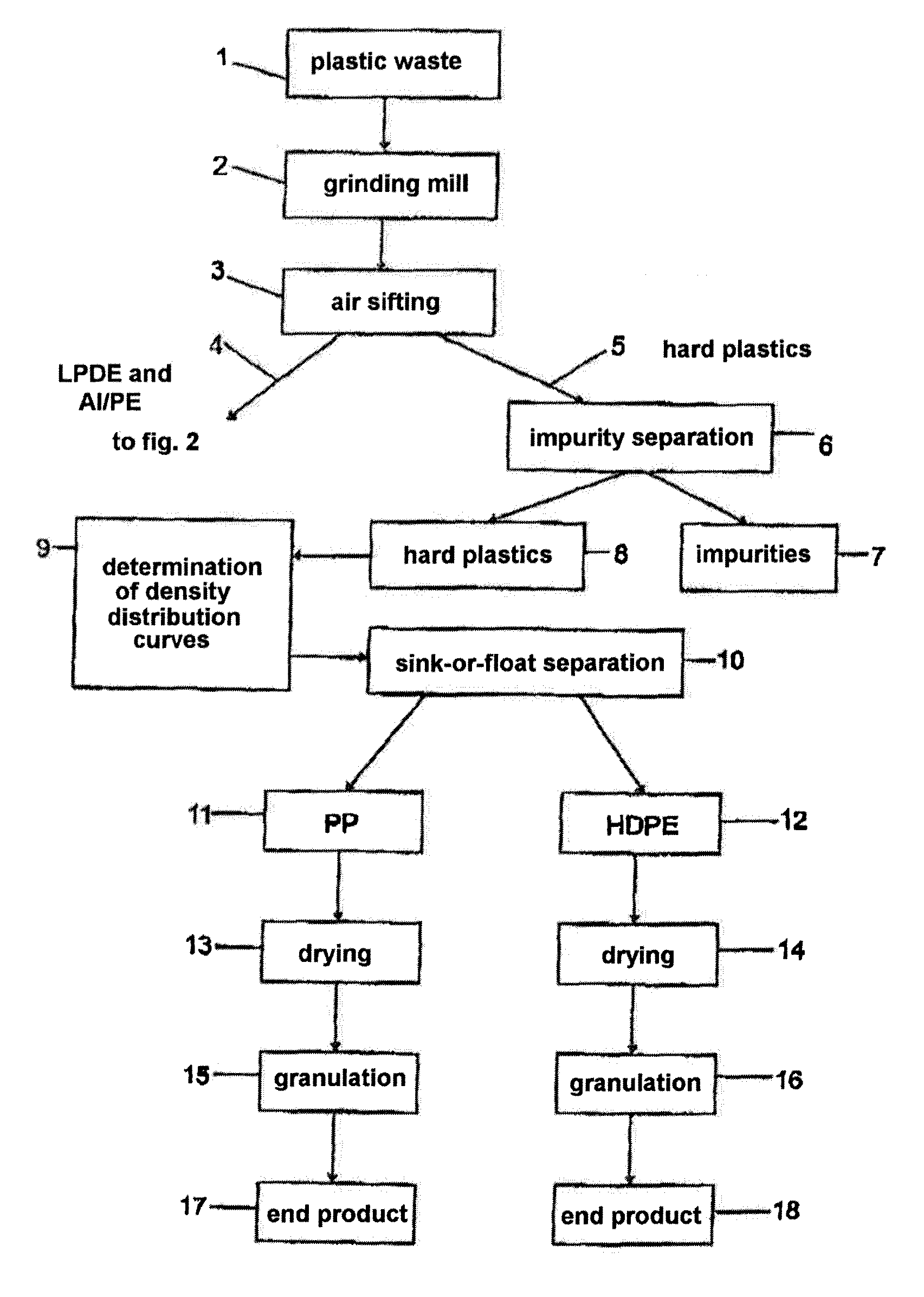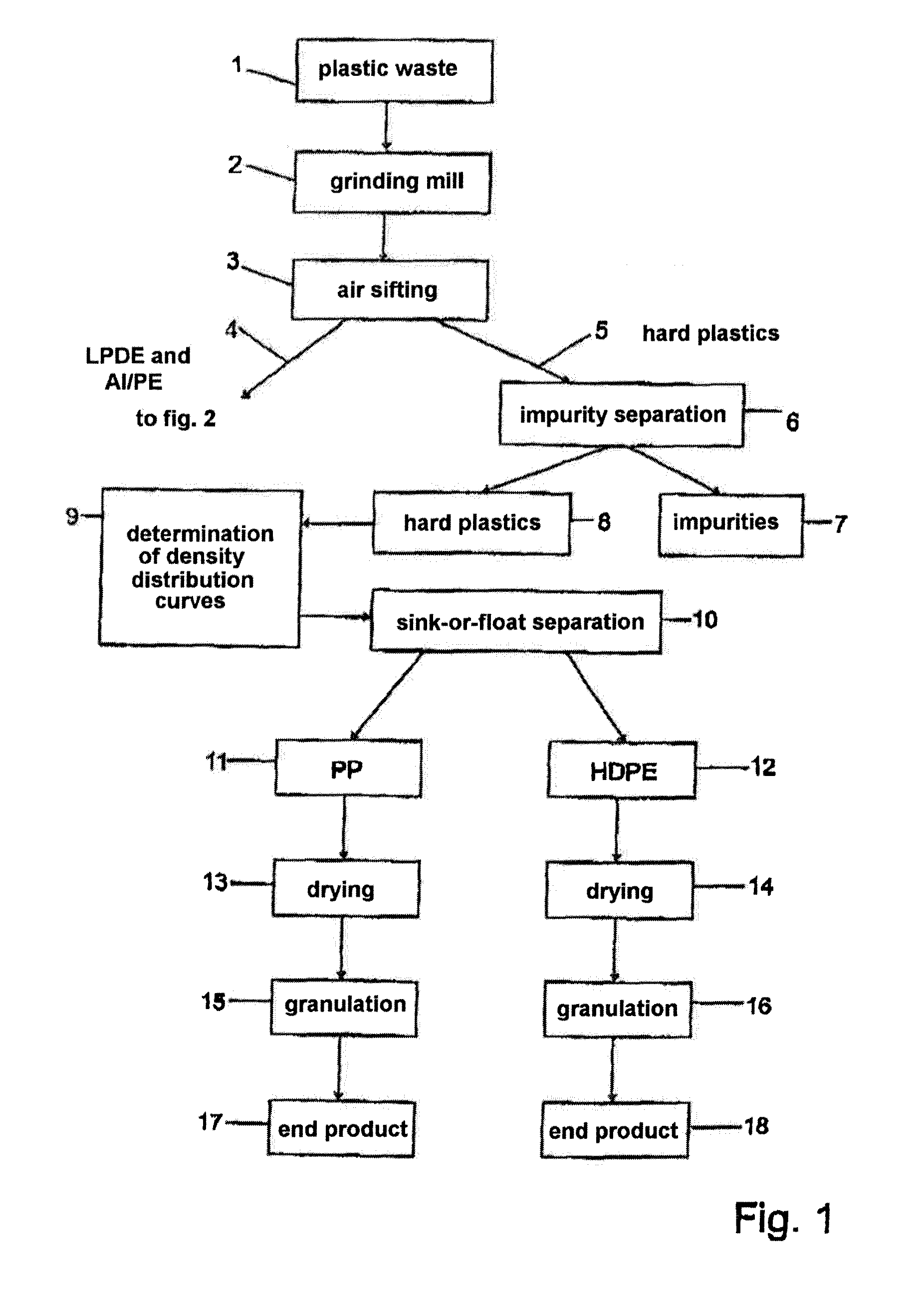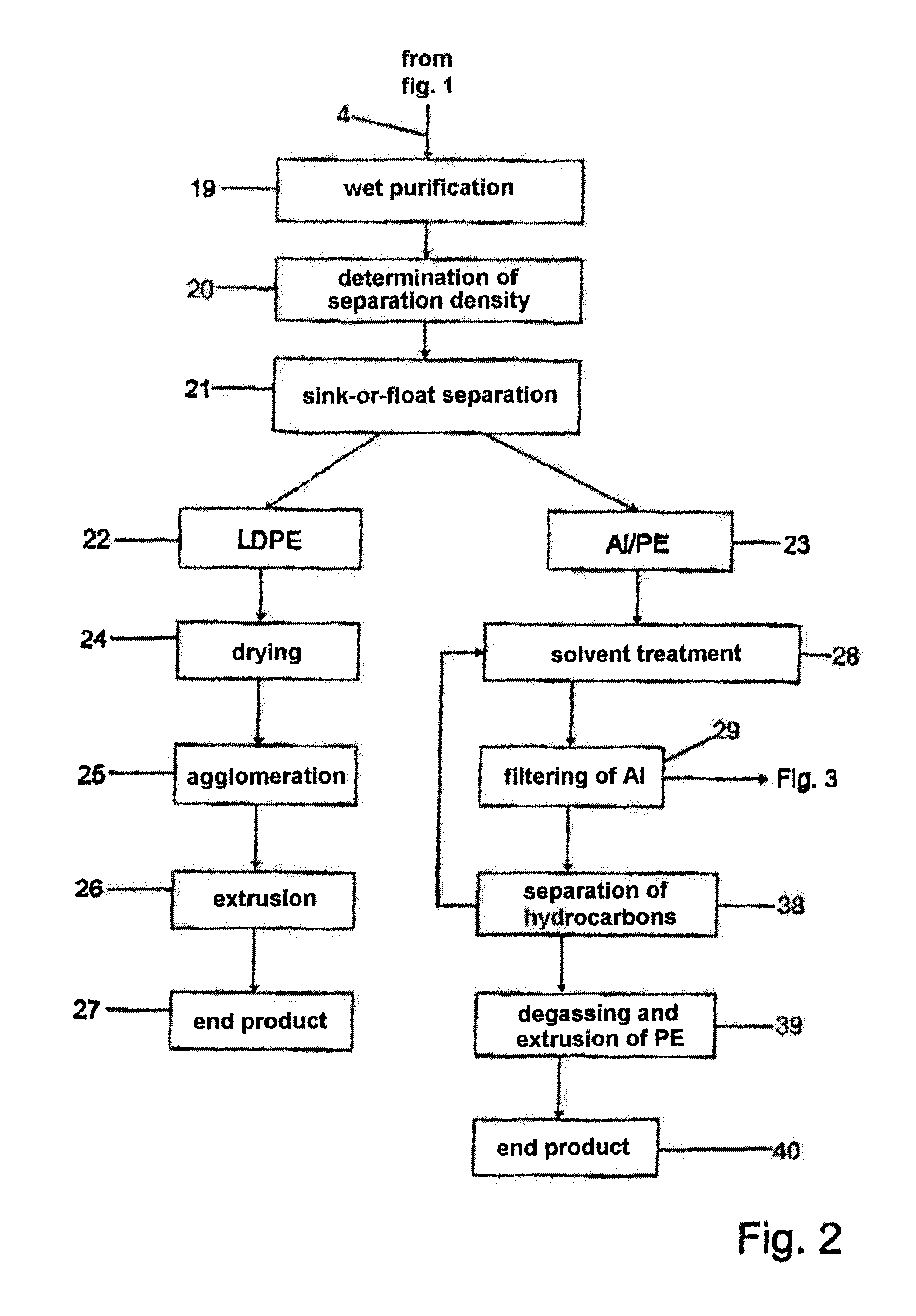Method and installation for separating individual valuable materials from mixed, in particular milled, plastic waste
a technology of valuable materials and installation methods, applied in the field of separating individual valuable materials from mixed, can solve the problems of large loss of accumulated energy consumed for the production of new goods therefrom, inability and inability to obtain plastics of high and constant quality, etc., to achieve high separation selectivity and purity. , the pre-requisite for obtaining plastics of high quality and constant quality, and achieve the effect of high separation selectivity
- Summary
- Abstract
- Description
- Claims
- Application Information
AI Technical Summary
Benefits of technology
Problems solved by technology
Method used
Image
Examples
Embodiment Construction
[0035]The description of the method according to the invention is made using a non-limiting example of the recycling of liquid cartons, making reference in the first place to FIGS. 1 to 3, the technical details being transferable to all the methods and installations according to the invention.
[0036]Milled plastic waste comprising shredded liquid cartons is fed to the process, see step 1. This ground material or reject essentially comprises plastic films, laminated films of aluminium and polyethylene (Al / PE films), hard plastics such as for example HD-PE and PP closures, small quantities of paper fibres, small quantities of technical plastic films such as for example polyamide and PET, as well small quantities of impurities such as metal particles, textiles, sand etc.
[0037]According to the invention, a dry-mechanical separation of the residual paper fibres from the plastics takes place in a step 2. For this purpose, use is made of a grinding device, which either comprises a friction ...
PUM
| Property | Measurement | Unit |
|---|---|---|
| particle size | aaaaa | aaaaa |
| temperatures | aaaaa | aaaaa |
| density | aaaaa | aaaaa |
Abstract
Description
Claims
Application Information
 Login to View More
Login to View More - R&D
- Intellectual Property
- Life Sciences
- Materials
- Tech Scout
- Unparalleled Data Quality
- Higher Quality Content
- 60% Fewer Hallucinations
Browse by: Latest US Patents, China's latest patents, Technical Efficacy Thesaurus, Application Domain, Technology Topic, Popular Technical Reports.
© 2025 PatSnap. All rights reserved.Legal|Privacy policy|Modern Slavery Act Transparency Statement|Sitemap|About US| Contact US: help@patsnap.com



